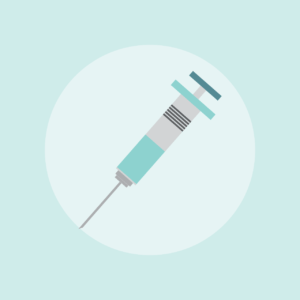Cortisone: A Quick Relief Guide to Orthopedic’s Most Common Injection
I injured my hip entering my sophomore year of high school. I was a top ranked discus thrower and although I managed to get off one great throw during an early in the season meet, my distances quickly diminished after reinsuring my hip in practice. Running became difficult, and soon enough, I was hardly able to train due to the discomfort in my hip. My primary care physician referred me to Dr. Slattery at Washington Orthopedic Center, and after exploring different options Dr. Slattery and I decided to move ahead with a cortisone injection. Now I won’t say the injection was a miracle worker; I didn’t make state that year in discus nor did my pain vanish. However, the cortisone did give my body the advantage it needed to overcome the chronic inflammation in my hip and make a return to full sport participation in the following years. That’s what cortisone does; it provides a kick-start of sorts to prevent an overactive recovery system.
To understand what a cortisone injection does, you first need to understand inflammation.
Perhaps the most popular term in health sciences right now, inflammation in the product of damage done to your body’s tissues. Every injury results in inflammation. Exercise causes inflammation. Even eating food triggers inflammation. Typically inflammation is a good thing. It results in increased blood flow to an area to stimulate recovery by providing essential nutrients and by bringing white blood cells, cells that fight off foreign invaders and clean up waste products, to the injured site. Over time, the waste products are disposed of naturally by your body and the blood flow returns to normal. Yet, as in the case of my hip, sometimes the body’s inflammations response is too efficient, which may result in chronic inflammation that produces the discomfort felt a day after an event like an ankle sprain, but over the long term.
This is where a cortisone shot jumps into action. A cortisone shot typically contains a corticosteroid, a strong anti-inflammatory, and a local anesthetic to be administered directly to the area of interest. The injured area may feel immediately improved thanks to the effects of the local anesthetic, but may be more painful after the anesthetic effects wear off since the body reacts to a needle entering the tissue. Yet, after 3-4 days, you may begin feeling the beneficial effects of the corticosteroid, which leads to less inflammation and pain. Cortisone shots are administered at most four times per year, however, many orthopedists prefer to use the shot less frequently. Here are the advantages and disadvantages of cortisone shots:
 Advantages:
Advantages:
• Fast and strong reaction to inflammation
• Easy to administer
• Cheaper than alternatives like synthetic joint injections or surgical procedures
• High success rate
• Minimal side effects
Disadvantages:
• Possible shrinkage and/or lightening of skin at the injection site
• Post injection soreness at the injection site
• Elevated blood sugar for those with diabetes
• Possible, but very unlikely, avascular necrosis (dying blood vessels), acne, or osteoporosis
Cortisone shots may benefit people of nearly any age or activity level given the right circumstances. The shot is one of the most rapid and dependable ways to overcome long acting pain and inflammation, and can be as easy as a quick visit to your doctor. Specifically, an orthopedist, with their specialized knowledge of anatomy and prior experience using these shots on a regular basis, can provide the best opportunity for success.
Do you think you need a cortisone shot in Centralia or Olympia? Luckily, Washington Orthopedic Center has you covered. With five doctors and four physician assistants on staff, we have the experience and availability to meet your specific health needs. Call us today at 360-736-2889 to schedule an appointment with one of our providers and learn more about how a cortisone shot may improve your long-term discomfort.
Article by Levi Bale
